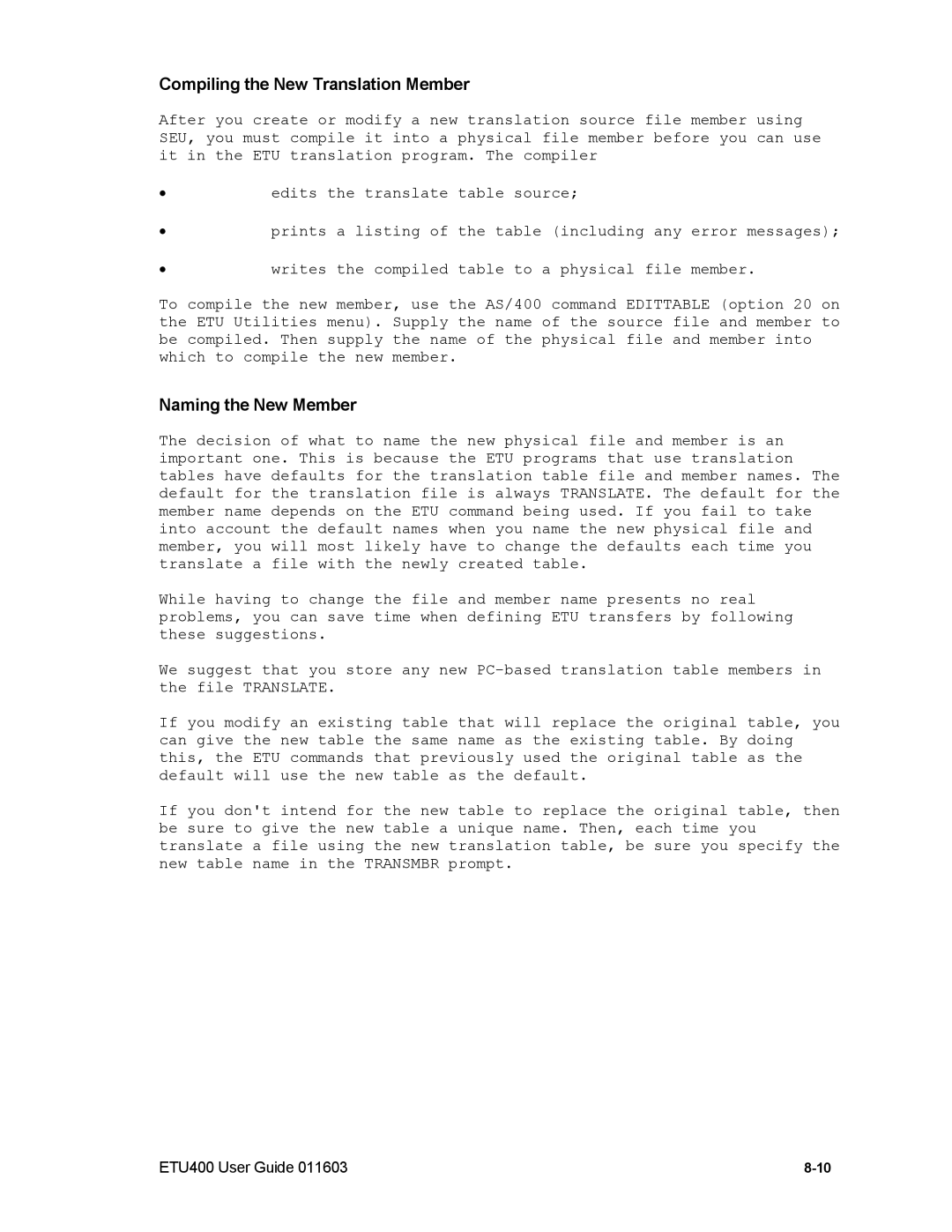Compiling the New Translation Member
After you create or modify a new translation source file member using SEU, you must compile it into a physical file member before you can use it in the ETU translation program. The compiler
•edits the translate table source;
•prints a listing of the table (including any error messages);
•writes the compiled table to a physical file member.
To compile the new member, use the AS/400 command EDITTABLE (option 20 on the ETU Utilities menu). Supply the name of the source file and member to be compiled. Then supply the name of the physical file and member into which to compile the new member.
Naming the New Member
The decision of what to name the new physical file and member is an important one. This is because the ETU programs that use translation tables have defaults for the translation table file and member names. The default for the translation file is always TRANSLATE. The default for the member name depends on the ETU command being used. If you fail to take into account the default names when you name the new physical file and member, you will most likely have to change the defaults each time you translate a file with the newly created table.
While having to change the file and member name presents no real problems, you can save time when defining ETU transfers by following these suggestions.
We suggest that you store any new
If you modify an existing table that will replace the original table, you can give the new table the same name as the existing table. By doing this, the ETU commands that previously used the original table as the default will use the new table as the default.
If you don't intend for the new table to replace the original table, then be sure to give the new table a unique name. Then, each time you translate a file using the new translation table, be sure you specify the new table name in the TRANSMBR prompt.
ETU400 User Guide 011603 |
